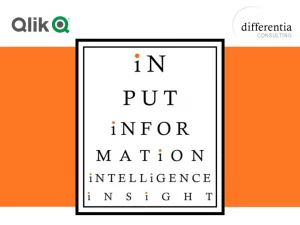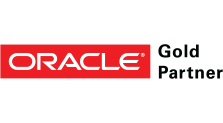#Envision2020 – BI Trends for 2020 – Have you clarified your BI vision for 2020?
#Envision2020 – BI Trends for 2020; Differentia Consulting has watched closely and responded to the changes in the BI world during 2019. Major acquisitions such as Looker and Tableau, the increased competition from global lock-in vendors such as Microsoft, and new players in the market, have ensured that now is not the time to stand still.
As an independent solution vendor (ISV) Differentia Consulting needs to ensure that our clients get a return to justify the continued investment in BI solutions and services. Our Primary partner Qlik is currently delivering this by developing a non vendor-lock-in best of breed BI stack, that Differentia Consulting refers to as the #GreenStack. It also benefits clients by delivering a world class third wave BI solution that offers fully governed and secure data access for decision making from origin to point of decision.
Qlik argue that they now have the tools to not only compete but lead, providing you with competitive advantage. Qlik is integrating with other BI vendor tools to ensure that Qlik stays relevant as part of your BI solution. We are seeing Qlik Data Solutions integrate with competing analytics solutions for the benefit of clients. As well as integration with their own product set. Qlik Sense and QlikView applications can be viewed on their Kubernetes Qlik Cloud Services (QCS) offering for example.
On the 14th of January 2020, Qlik will be hosting their ‘2020 BI Trends: Analytics Alone Is No Longer Enough’ Webinar, to find out more information and to register for the webinar please click – here
Top BI Trends for 2020
In today’s world, we have access to more data than we know what to do with. But to get the most value from it, analytics is no longer enough – we need synthesis to bring it all together. In 2020, technology and processes will shift toward holistic, end-to-end data solutions that will revolutionise the data ecosystem and drive real change. Below, Qlik have identified the top 10 trends for 2020.
These 10 trends will help make it possible:
-
- 01 Becoming a real-time enterprise is no longer optional.
If we’re going to make the best possible business decisions, we need our data delivered to the right place at the right time. 5G and IPV6, Kubernetes, streaming architecture, and more can help us respond in an instant – and stay ahead of the game
- 01 Becoming a real-time enterprise is no longer optional.
-
- 02 Big data is just data. Next up? Wide data.
With data formats and sources more varied and fragmented than ever, combinations of data eat big data for breakfast. Companies that can achieve synthesis will stand strong.
- 02 Big data is just data. Next up? Wide data.
-
- 03 Graph analytics and associative technology will surpass SQL.
To address bigger business problems, you need to break away from queries based on rows and columns. Technology that lets you analyse the natural associations within your data will get you better results.
- 03 Graph analytics and associative technology will surpass SQL.
-
- 04 DataOps plus self-service is the new agile.
DataOps improves the quality and reduces the cycle time of data management on the operational side. And self-service minimises users’ reliance on IT. Together, they’re helping data flow more efficiently across the entire value chain.
- 04 DataOps plus self-service is the new agile.
-
- 05 Active metadata catalogues will be the connective tissue.
Demand for data catalogues is skyrocketing as enterprises face massive amounts of data distributed across multiple sources. Machine learning–augmented catalogues are keeping data adaptive and changing – even across hybrid and multi-cloud systems.
- 05 Active metadata catalogues will be the connective tissue.
-
- 06 The emergence of Data Literacy As a Service.
The adoption rate for BI tools is currently at 35 percent. To get workforce’s over this “BI plateau,” enterprises must develop their data literacy programs – and they’re partnering with vendors to get people more comfortable working with their data.
- 06 The emergence of Data Literacy As a Service.
-
- 07 Multifaceted interactions will move us beyond search.
Search is no longer enough. Tech that can understand and process human expressions combined with tried-and-true data query approaches is the key to bridging the human-computer gap.
- 07 Multifaceted interactions will move us beyond search.
-
- 08 Ethics and responsible computing are now critical.
Advances in technology improve our lives – but they can also raise serious concerns. That’s why it’s more important than ever for companies to ask not only can something be done – but should it.
- 08 Ethics and responsible computing are now critical.
-
- 09 “Shazam” for data.
Imagine if analytics systems could use algorithms to fingerprint our data, find anomalies and insights, and suggest new data for us? If we could “Shazam” our data, imagine how much more efficient and faster both data analysis and integration would be?
- 09 “Shazam” for data.
- 10 Independence vs. stack: The sequel.
Getting stuck in one data ecosystem will almost always be more costly in the long run, as big application stacks get more control over customers’ data to monetise it. Independent, end-to-end analytics vendors and hybrid/multi-cloud platforms are now a necessity.
BI Dev Lifecycle. DevOps Comes to Qlik.
Kubernetes
Differentia Consulting is proud to announce the first client deployment of Qlik Sense Enterprise on Kubernetes, to a UK Government body. The specific Government body does not support Windows and was therefore keen to understand other deployment models for Qlik. Kubernetes is ideal for them as they already deliver other services via containerization.
Qlik Sense on Kubernetes or QSEoK offers the opportunity for a customer to deploy Qlik Sense and leverage the elastic potential that Kubernetes and containerization offers, in addition it offers clients a deployment option of Qlik Sense with zero Windows footprint.
Data Literacy
Gartner defines data literacy as the ability to read, write and communicate data in context, including an understanding of data sources and constructs, analytical methods and techniques applied — and the ability to describe the use case, application and resulting value.
The ability to communicate in a common data language with shared understanding is a core skill for a core technology. It is the difference between successfully deriving value from data and analytics and losing out to competitors who have already made it a core competency.
Champion data literacy and evangelise the benefits of eliminating the data literacy gap. Closing the gap will allow you to harvest your organisation’s latent business value and to benefit from the ongoing developments in data culture.
Data Literacy – Survey
#Envision2020 – BI Trends for 2020 – Additional Articles
Gartner Top 10 Data and Analytics Trends – Gartner
Business intelligence: Trends you should know for 2020 – TechHQ looks into how the BI sector seems set to develop in 2020
11 Business Intelligence Trends for 2020: Latest Predictions You Should Be Thinking About – Finances Online discusses the latest trends shaping the future of the BI industry.
10 Data and Analytics Trends for 2020 – Information Week identifies the trends you’ll need to watch out for







